The famous Ephesus Library was situated to the south of the Agora. This elegant monument was built in A.D. 135 by Julius Aquila In memory of his father, Celsus Polemaeanus of Sardis, Roman Senator and Proconsul of the province of Asia.
After passing through a marble-paved courtyard twenty-one meters wide one reaches the main reading-room by nine wide marble steps. There are four bases for statues at the top of the staircase The floor of the main reading room is built on arched vaults and the inner and outer walls are separated by a corridor, thus protecting the library from damp.
The walls and floor of the room were completely faced with colored marble. Across the main reading room there was an exactly placed niche for offerings; to the right and left of the round niche and on the side walls were square niches containing cupboards to hold the rolled manuscripts. On the front of the Library of Ephesus there was a two-storied gallery.
A section sixteen meters high was very richly decorated with a raised column, door ornaments and sculptural architectural monuments, carving and decoration. These carvings are to be seen in the Vienna Museum.
In a burial chamber in the lower part of the library can be seen a decorated white marble tomb in which Gaius Julius Celsus Polemaeanus was buried. The life of Celsus is related in Greek and Latin on the bases of the statues on each side of the library staircase.
History
The Library of Celsus was comissioned by the Consul Julius Aquila as a mausoleum for his father, Julius Celsus Polemaeanus, Roman governor of the Asian Provinces. It may be that Celsus was granted heroic honors, which would furthur justify the expense.
The monument was constructed between 110 and 135 AD, after which Celsus was buried in a niche on the right side of the back wall.
With a few centuries of its construction a fire destroyed the reading room and the library fell into disuse. Around 400 AD, the courtyard below the exterior steps was converted into a pool. The facade collapsed in an earthquake in the 10th century.
The Library of Celsus was raised from the rubble to its present splendid state by F. Hueber of the Austrian Archaeological Institute between 1970 and 1978.
What to See
Located next to the south gate, the Library of Celsus is 21m wide and over 16m high with a 2.4m-deep portico. The mausoleum-library originally had three stories, with galleries in the upper two stories.
Scrolls and codexes were stored in the niches, dispensed by a librarian. In total, 30 bookcases held about 12,000 scrolls. The reading room faced east in order to take advantage of the best light.
The lower niches of the facade contain four statues, which are through to represent Wisdom, Knowledge, Destiny, and Intelligence. These are replicas of the originals that are now in Vienna.
Latin and Greek inscriptions can be seen among the ruins of the library.
Quick Facts
- Names: Celsus Library; Library of Celsus
- Type of site: Mausoleum
- Faith: Roman
- Status: Ruins
- Dates: 110-35 AD
- Architecture: Classical
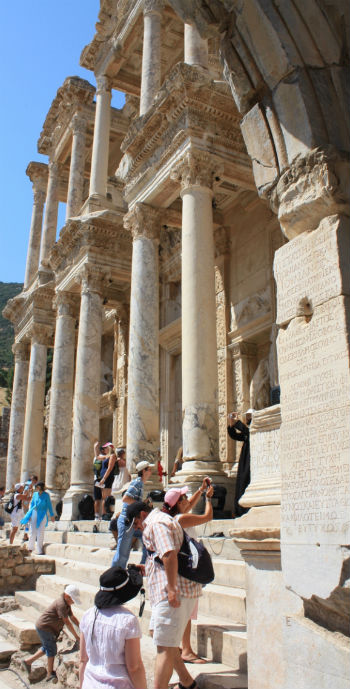
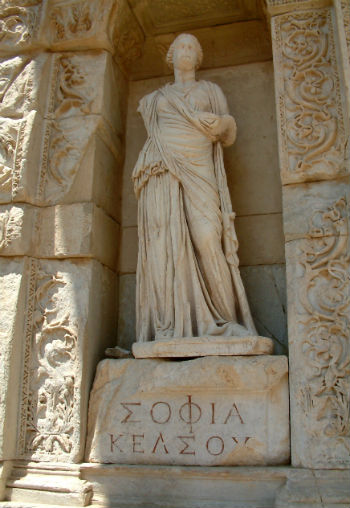
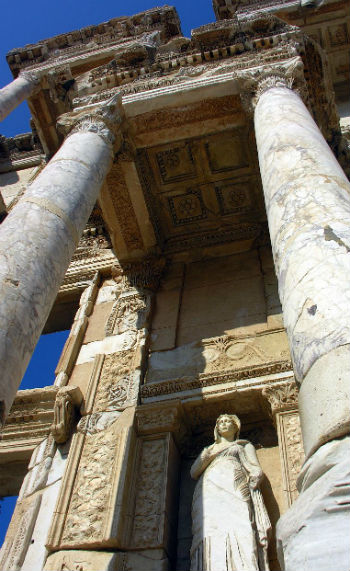
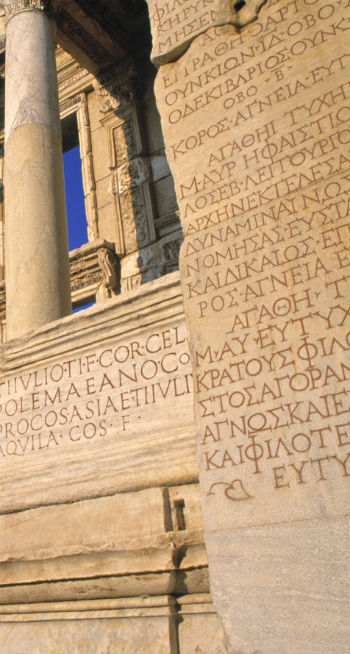
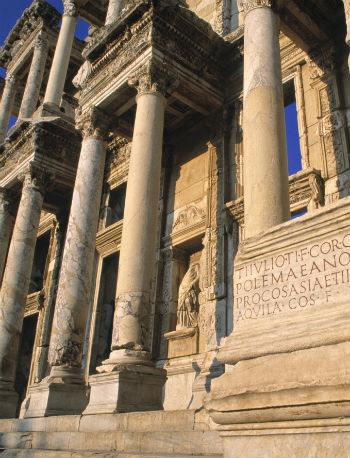
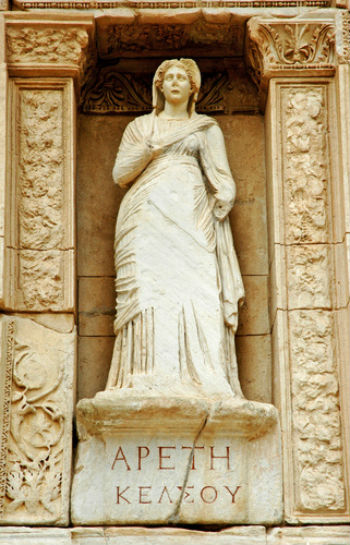
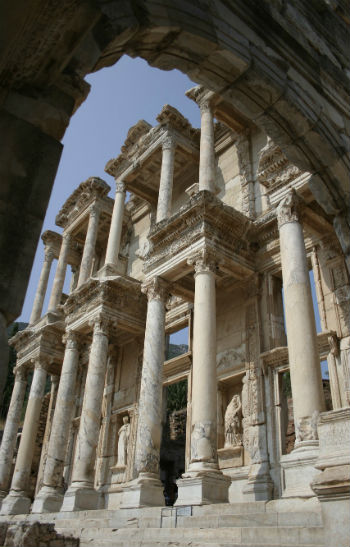


With its Corinthian columns and amazing detailing on the walls, the Library is a sight to behold. Intriguing to speculate that this building once housed over 12000 hand written books… WOW! It is one of the few roman buildings of its kind left standing, and well worth the visit. I will come back here to spend more time..
Ephesus was one of the greatest ancient Greek colonies,as well as a huge centre of culture and trade.Romans,Persians,Alexander the Great and Byzantium have also left their prints in this historical place but today,the remains of this magnificent library.
This library was one of the top three in its day. It's easy to imagine this as the city center during the Roman and biblical days. Paul would have made his way past here many times. Statues are beautiful on this multi-level library.
One of the best preserved Roman Library – and used as a monumental Tomb for Gaius Julius Celsus Polemaeanus. Built 114-117AD.
The most photographed "monument" at Ephesus.
This is an amazing library that is easily the most impressive structure but you can see this just from the picture.
Look out for the passageway between the library and the (Ladies house) an underground tunnel even back then. I found it slightly amusing to think how things have changed.
It was incredible to see how well such a large structure has withstood the weather and time.
I've been to Ephesus 3 times and can never get enough of the city. Each time, I am awed by The Library of Celsus. The fact that it still stands is amazing. Actually, the building is not too different from today's structures. How could it have held the thousand of scrolls it did is beyond me.
This is an amazing site in the City of Ephesus. To imagine the library being here thousands of years ago is incredible. The facade has bee rebuilt to show what the front of the library looked like. You have to let your imagination loose while here.
This ancient library is something to behold. It also tells a story about man-kind. The drive to learn (this was built by an individual), followed by greed and power (all the books were velum because Egypt kept a monopoly on papyrus (paper), but eventually Cleopatra became jealous of these books and the library in Alexandria mysteriously burned.
Great backdrop for some photos. Beautifully reconstructed.